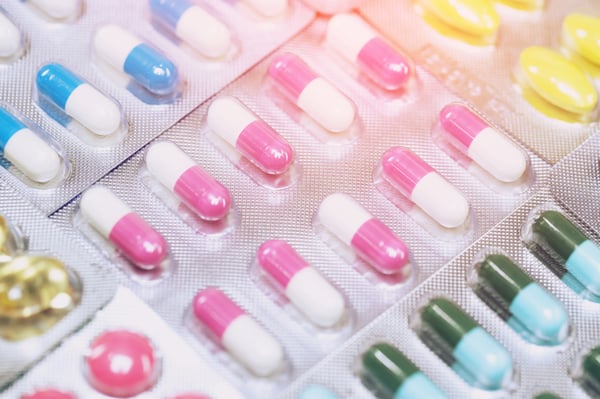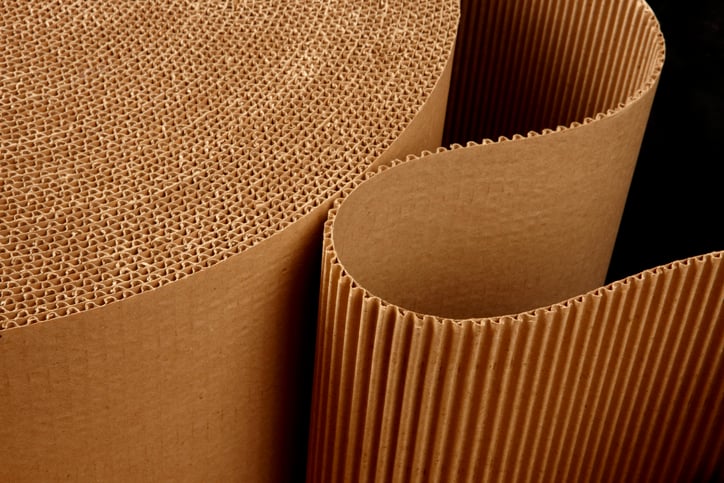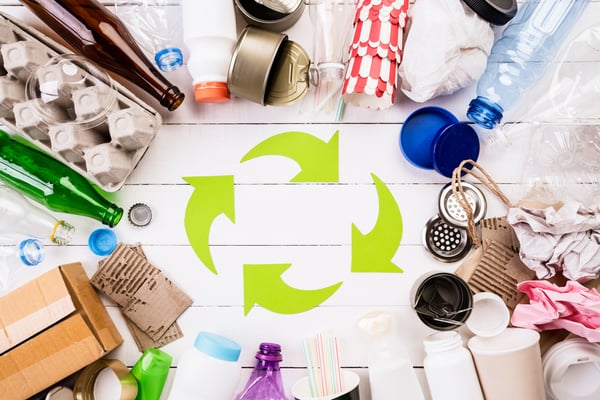7-Step Blister Card Packaging Printing Checklist
 Blister packs, or cards, are among the most popular packaging types for certain pharmaceuticals, over-the-counter drugs, and food. They’re also seeing more use in packaging batteries, toys, certain electronics, and tools -- so maybe you’re looking at switching your product line to blister cards too, or improving your current packaging.
Blister packs, or cards, are among the most popular packaging types for certain pharmaceuticals, over-the-counter drugs, and food. They’re also seeing more use in packaging batteries, toys, certain electronics, and tools -- so maybe you’re looking at switching your product line to blister cards too, or improving your current packaging.
Blister packs are fairly simple: The manufacturer adjoins a sheet of rigid plastic to some type of backing via an adhesive. While the package is rather simple, blister pack printing isn't always simple to optimize.
We've put together a checklist to help you get the best printing possible for your blister pack. We'll also cover other factors to consider as you dip your toes into blister card packaging printing for the first time.
Blister Card Packaging Printing Checklist

If you’re getting started on a new blister card print project, use this seven-step process to cover all the pitfalls and potential improvements you may encounter.
- Substrate
- Ink
- Press compatibility
- MSDS sheets
- In-house assembly
- Anilox
- Hidden factors
STEP 1. WHAT'S THE BEST SUBSTRATE FOR BLISTER PACKS?
A blister pack includes some type of backing, usually either aluminum foil or cardboard. Determine the type of backing that's right for your blister card by examining your packaging needs. Does your product require ...
- Water resistance?
- UV protection?
- Tampering protection?
- High product visibility?
If you need something beyond the usual, paperboard, film, laminate, and plastic sheets are all options to consider. Make sure you know which substrate is best suited for your end goal before you move forward in the design phase.
STEP 2. CHOOSE THE BEST INK FOR YOUR BLISTER PACK.
The type of ink you use is also largely dependent on the substrate on which you’re printing. If you don't use the appropriate ink for the type of substrate you're working with, you're likely to get:
- Transfer issues
- Unwanted color variation
- Unacceptable print quality
These are all blister packaging problems that can impact the product inside and leave you with unsatisfied customers. Furthermore, depending on the blister pack adhesives you're using, you may also want to check to see whether the ink is heat-tolerant.
STEP 3. IS THE PRINTING PRESS COMPATIBLE WITH YOUR BLISTER PACK?
Are you working with a printing press that can adapt and adjust to the thickness of the substrate? Not all presses are able to adjust from a thin film to printing on a thicker paperboard substrate.
Double-check with your printing team to make sure the press and its components are compatible with your packaging materials.
STEP 4. DON’T FORGET YOUR MSDS DOCUMENTATION.
If you're using chemicals in your production facility, you're already well aware of the need for MSDS documentation. In a packaging environment, they help determine proper image carrier covering for ideal:
- Durability
- Ink transfer
- Swelling prevention
Safety documentation is especially important in following pharmaceutical packaging design guidelines.
STEP 5. WHERE WILL THE BLISTER PACKAGING ASSEMBLY HAPPEN?
Are you just printing blister cards? Or are you assembling the entire packaging in-house?
If you're performing the latter, you're going to need a lot more than just a printing press. You’re going to need:
- Laminating equipment
- Adhesive application capabilities
- Die cutting machinery
- Other converting staples
STEP 6. ARE THE ANILOX ROLLS GOOD TO GO?
Anilox rolls carry the ink, adhesive, or glue to the image carrier. They also control the amount of substance that is transferable.
It's an important piece of the printing puzzle -- ensuring that anilox rolls are in good shape is key to a high-quality printing job. Take the time to understand how the anilox rolls function to make sure that they're working for you, not against you.
STEP 7. ARE THERE ANY OTHER SPECIAL CONSIDERATIONS?
One other factor to consider with pharmaceutical blister packaging materials is matching the print or gluing to the die cut board. To do this properly, the image carrier and die cylinder must be an exact match. If your stock needs to be die cut, will it be via a rotary or flatbed process?
Are there any special material transfer considerations for your ink, glue, or other adhesive? Will the delivery method affect the coating?
Work with your flexography partner in case it sees any special-case scenarios that may affect how you print.



